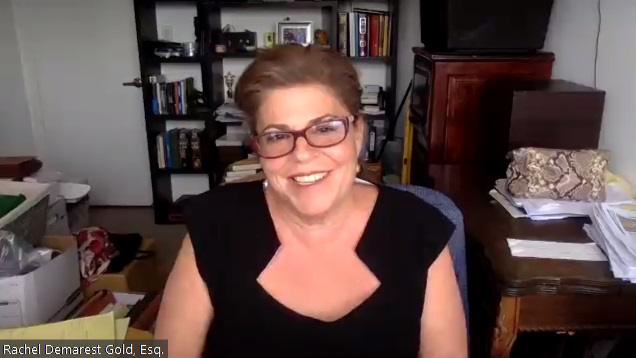With NYC poised to reopen, Abrams Fensterman attorney explains what employers need to know

Screenshots via Zoom
The Brooklyn Chamber of Commerce has hosted a series of webinars designed to help local business owners deal with the COVID-19 pandemic. It’s most recent one featured Abrams Fensterman attorney Rachel Demarest Gold, who explained what businesses need to know as they prepare to reopen.
Hundreds of attorneys and small business owners tuned in on Zoom on Thursday, May 28 to watch the one-hour seminar entitled, “Returning to Work: What Employers Need to Know to Avoid Lawsuits & Penalties,” which ended with a Q&A session.
“We’re excited that we’re starting to look toward reopening now and are pivoting our programming to address the issues that will come up,” said Samara Karasyk, the executive vice president and chief policy officer with the Brooklyn Chamber of Commerce. “The governor has not given a lot of guidance in NYS in terms of what reopening will look like exactly, what are the steps you need to take, but we have experts like Rachel Gold to give you information to help you navigate this and answer questions.”

Brooklyn Boro
View MoreNew York City’s most populous borough, Brooklyn, is home to nearly 2.6 million residents. If Brooklyn were an independent city it would be the fourth largest city in the United States. While Brooklyn has become the epitome of ‘cool and hip’ in recent years, for those that were born here, raised families here and improved communities over the years, Brooklyn has never been ‘uncool’.